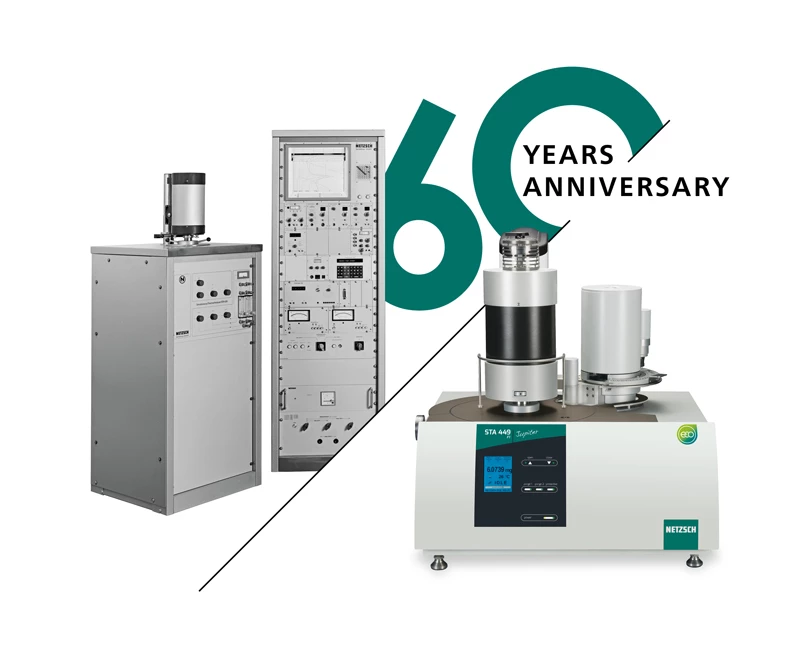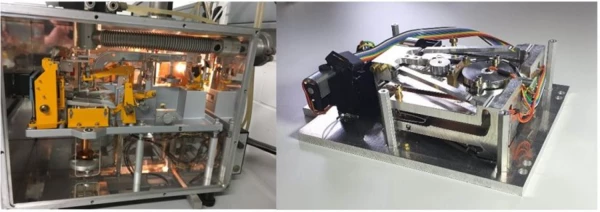
02.02.2022 by Dr. Ekkehard Post, Aileen Sammler
60 Years of NETZSCH-Gerätebau GmbH – History of Simultaneous Thermal Analysis
STA – Along with dilatometry, this classical thermal analysis technique is one of the oldest in the history of NETZSCH-Gerätebau GmbH. In the coming weeks, you will learn more about the history of STA and the latest instrument highlights. There are also some nice service stories, that will make you smile.
In January, as part of the year-long celebration of our company’s 60th anniversary, we looked behind the scenes at our dilatometers. In February, it’s going to all be about STA – simultaneous thermal analysis. There will be an interesting story about the development of our STA over past decades, an exciting contribution from one of our long-standing customers in the field of nuclear safety research, and tales of curious and crazy experiences had by our Chinese service team in Shanghai. And there will also be a birthday song …
History of Simultaneous Thermal Analysis (TGA-DSC/DTA) (STA)
STA – Along with dilatometry, this classical thermal analysis technique is one of the oldest in the history of NETZSCH-Gerätebau GmbH. STA instruments evolved from the differential thermal analysis (DTA) technique. In 1954, NETZSCH built the first DTA for the characterization of minerals (kaolins, clays, etc.). Among other uses, it served for determination of mineral phases and was an important method for the selection and quality assurance of ceramic raw materials for the porcelain industry in northern Bavaria. In geology and mineralogy, it was used for the determination and quantification of clay minerals, inorganic substances, and also organic compounds. Later, its combination with a thermobalance (TGA) allowed for the simultaneous determination of energetic effects and mass losses. This made it possible to assign weight losses – for example, those due to dehydration or Decomposition reactionA decomposition reaction is a thermally induced reaction of a chemical compound forming solid and/or gaseous products. decomposition processes – to the EndothermicA sample transition or a reaction is endothermic if heat is needed for the conversion.endothermic or ExothermicA sample transition or a reaction is exothermic if heat is generated.exothermic DTA peaks during a measurement.

Read an article about the company history of NETZSCH-Gerätebau GmbH from 1969.
The first NETZSCH vacuum thermobalance TGA 419 was manufactured and delivered in 1969, followed one year later by the STA 429. There was already an STA 409 by then as well, but it was not gas-tight. At that time, the recording of data was still carried out by means of a measuring recorder. The peaks were cut out manually and weighed for enthalpy determination. Later, operators used the first HP computer (HP310) with dual disk drives. Plotters and dot-matrix printers were employed for graphical output of the data after evaluation. At that time, gas- and vacuum-tight instruments were also developed since it had also become necessary to measure in inert gas atmospheres to prevent OxidationOxidation can describe different processes in the context of thermal analysis.oxidation – for example, the OxidationOxidation can describe different processes in the context of thermal analysis.oxidation of metals such as titanium, tungsten or zirconium.

Data Recording: From Measuring Recorder to Modern PC Technology
The requirements for accuracy, long-term stability and sensitivity increased over time as did miniaturization in electronics and advances in computer technology.

Click here to look at one of our first STA 429 brochures.
From this point forward, digital balances were used instead of the analog balances previously used. This also resulted in balance housings being reduced; for example, from 25-l dead volume in the old STA housings to about 2.5 l in the new STAs. The greatly reduced volume led to a reduction in pump-out times, gas exchange processes and improvement in the purity of the measurement atmosphere.

Modular Instrument Setup for Maximum Flexibility
The NETZSCH philosophy was clear right from the start of development: The intention was to design a modular setup for the STA providing very flexible measuring arrangements, by means of having only a few modification steps that the customer can carry out personally.
For example, the various DTA and DSC sample carriers can be easily changed out thanks to plug-in systems. This allows for fast changeover from TGA to TGA-DTA or TGA-DSC sensors. By using different thermocouple types, the temperature range optimum for a measurement can be adjusted and set, along with sensitivity.
Customer requests and new measuring requirements led to a variety of furnaces that cover a temperature range from -160°C to 2400°C, allow for special atmospheres (water-vapor furnaces, furnaces for corrosive gas atmospheres, etc.) or are designed for extremely fast hating rates (high-speed furnaces). Downstream gas analysis (MS, FT-IR, GC-MS) is an important addition to STA instruments. In many cases, it allows for easier interpretation of the STA results – which often only then become meaningful. We will discuss these coupling possibilities in detail next month. And next week, find out in detail, what makes our current STAs so unique.